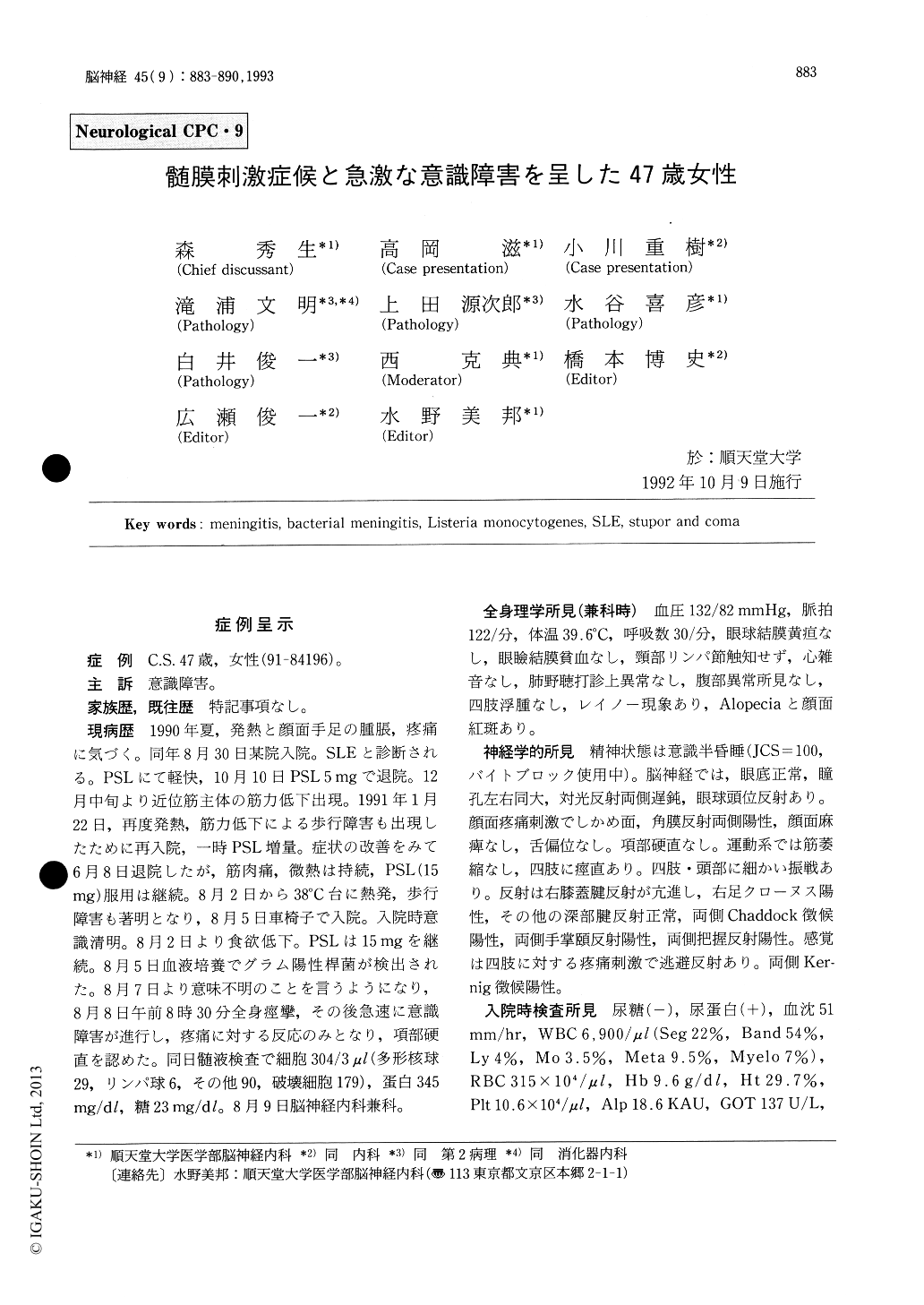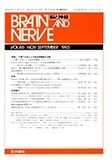Japanese
English
- 有料閲覧
- Abstract 文献概要
- 1ページ目 Look Inside
症例呈示
症例 C.S.47歳,女性(91-84196)。
主訴 意識障害。
We report a 47-year-old woman with SLE, who developed meningeal signs and consciousness dis-turbance.
She noted an onset of fever, and swelling and pain in her face, hands and feet in 1990. She was seen in another hospital and the diagnosis of SLE was made. She was treated with prednisolone with marked improvement in her symptoms. She was well with 5 mg of oral prednisolone daily until January of 1991, when she developed fever, myalgia and weakness in her legs. She was admitted to the medical service of our hospital on August 5. She was receiving 15 mg of prednisolone daily. Gram positive rods were cultured from her blood on August 5. She became incoherent 2 days later, and had a convulsive epi-sode on August 8. After the convulsion, she lost consciousness from which she did not recover. Her CSF contained 304/3μl cells, 29 of which were neutrophils, 6 lymphocytes, 90 others, and 179 des-tructed cells. The CSF protein content was 345 mg/ dl, and glucose 23 mg/dl. A neurological consulta-tion was asked on August 9.
Physical examination at that time revealed a semicomatous woman. Respiration was 30/min and regular. BP 132/82 mmHg, heart rate 122/min and regular, and BT 39.6℃. General physical examina-tion was unremarkable. Pertinent neurologic find-ings were positive Kernig sign and spasticity in allfour limbs. Brain stem reflexes were retained. Upon painful stimulation, withdrawal response was elicit-ed both lower extremities. She was treated with pipiracillin, latamoxef and phenobarbital, however, she had frequent seizures. She was deeply comatose on December 10. She became flaccid and no more meningeal signs were observed. She expired on December 11.
She was discussed in a neurological CPC. The chief discussant arrived at a conclusion that she had Listeria monocytogenes meningoencephalitis and sepsis, and septic shock.
Post-mortem examination revealed a hepatic abscess typical of listeria infection. Under a micro-scope, numerous microabscesses were scattered in the liver. Most of the infiltrating lymphocytes were T-cells with the specific immunostaining, another typical finding for listeria infection.
In the central nervous system, the leptomeninges showed diffuse thickening. No evidence of tentorial or tonsillar herniation was observed. In the KB stain, pallor of myelin was observed in the cerebral white matter. No evidence of central nervous sys-tem lupus was observed. In the leptomeninges, dif-fuse mononuclear cell infiltration was observed, which suggested Listeria monocytogenes meningi-tis. The parechyma of the brain was well preserved.
Listeria monocytogenes infection usually occurs in immunologically compromised hosts. Common underlying diseases include malignant lymphoma, collagen disorders, and chronic alcohol intoxication. Aminobenzyl penicillin is the drug of choice for Listeria monocytogenes infection. Listeria should be considered whenever patients under chronic steroid treatment develop meningeal signs. Initial symp-toms may be subtle. Listeria meningitis at times involves the brain stem which is called as rhomben-cephalitis, which this patient did not have.

Copyright © 1993, Igaku-Shoin Ltd. All rights reserved.


